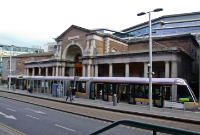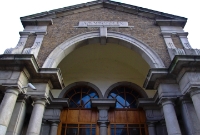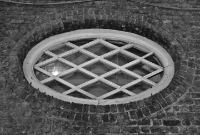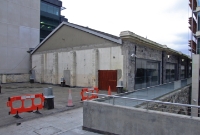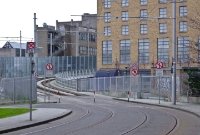Harcourt Street
Harcourt Street, Dublin, was the terminus of the Dublin Wicklow & Wexford Railway's mainline from Wexford, which ran on an inland route through south Dublin from Bray. The Harcourt St line served such villages as Dundrum, Stillorgan and Milltown, all of which are now very much part of the southern suburbs of Dublin City. It was therefore very short sighted of CIE that the line from Harcourt St to Bray was closed in December 1958. However much of the former trackbed remained intact and was reopened in the form of Luas line B (the Green line) as far as Brides Glen near Shankill.
The large and imposing station building on Harcourt Street remains of course to serve as a reminder of this former rail line, now in the form of the Luas. Built in 1859, it is flanked with doric pillars, with one large arch above the entrance designed by J.Wilkinson. The train shed remains and is presently been used as a garage/parking area. At the rear of the station is Hatch St, where the infamous 1914 accident occurred.
The large and imposing station building on Harcourt Street remains of course to serve as a reminder of this former rail line, now in the form of the Luas. Built in 1859, it is flanked with doric pillars, with one large arch above the entrance designed by J.Wilkinson. The train shed remains and is presently been used as a garage/parking area. At the rear of the station is Hatch St, where the infamous 1914 accident occurred.



